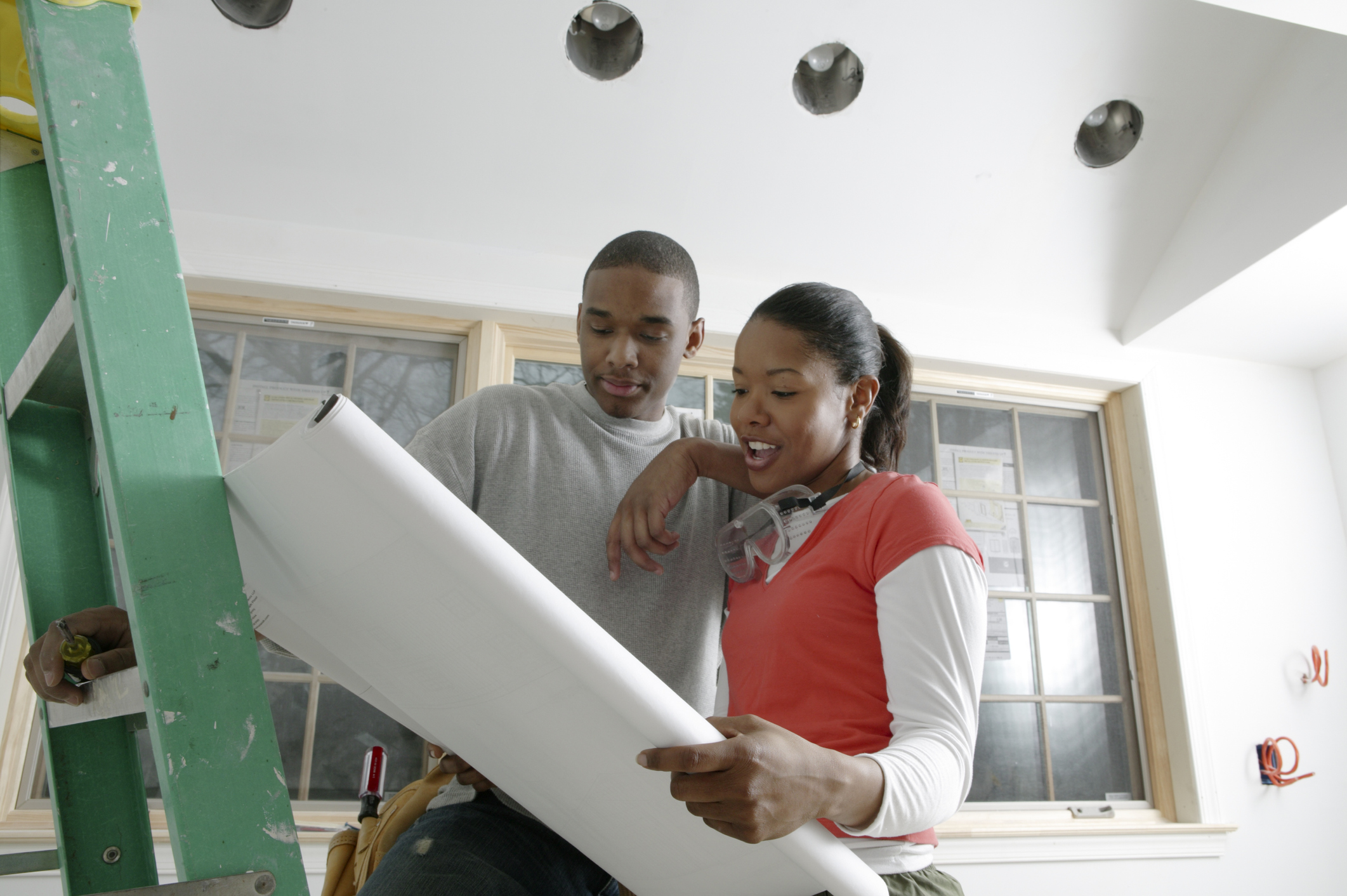Home addition cost: Price per square foot, where to save, and financing options
All the things to consider when creating a budget for your home remodeling job.


Planning to build an addition to your home? Count the costs now to assure you have the money to invest in the project. According to Fixr, an online marketplace for home remodeling, the average cost of a 240-square foot, first-floor home addition is $55,000. The average ranges from a $7,000 laundry room bump out to the elaborate $200,000 1,000-square foot second-story addition with a new roof.
Knowing how to plan a home addition budget helps you to see where the money is going, what expenses you might need to finance, and possible areas where you can save. Home addition cost variations come from several factors:
- Type and size of addition
- Your location
- Permitting requirements
- The cost of labor and materials
- Any hidden problems
Keeping these variables in mind, we have some averages that will help you in your planning.
Home addition costs by type
While most home additions cost about $200 per square foot, according to Fixr, variables can increase that amount. Plumbing for kitchens and baths is one example of something that drives up cost. Direction—either up or out—is another. “A ground floor addition costs a little more than a second story because of the excavation work,” says Steve Besch, architect and founder of Besch Design, Ltd. in Chicago. “And an attic renovation is less than both,” he adds. So, let’s take a look at a few types of home additions and what the average cost of each is currently nationwide.
Family room—Unless you add premium fixtures and materials or extensive cabinetry, you can count on your family room running the average cost per square foot, making a 15- by 20-foot room about $60,000.
Master suite—According to Remodeling’s 2020 Cost vs. Value report, the cost of a mid-range master suite is $136,739. Of course, the size of the suite and the fixtures and materials used contribute to the overall price tag.
Bathroom—The average mid-range bathroom addition, according to Remodeling magazine, is $49,598.
Get small space home decor ideas, celeb inspiration, DIY tips and more, straight to your inbox!
Kitchen—According to Fixr, the average kitchen addition costs from $50,000 to $70,000, depending on your location, kitchen design, and the quality of materials. Custom wood cabinets, for example, cost more than stock cabinets from the home improvement store.
A breakdown of common home addition costs
To get a better idea of where your money will be going, here's a breakdown of the most common home addition costs.
Cost of permitting
Building, electrical, and plumbing permits add to the cost of a home addition. The associated fees vary by location and scope of work. But typically, a building permit is priced according to the dollar value ascribed to the job.
For example, in Richmond, Virginia, before the building begins someone must secure a permit. Normally, it’s the general contractor. A building permit covers the construction but the job also requires separate trade permits for things like electrical, plumbing, or gas work. The appropriate subcontractor will file for those.
The fee structure for all residential permits is $63 for the first $2000 in value plus $6.07 per thousand or fraction thereof over that. So, if someone is planning a $30,000 addition, the fee for each permit would be $232.96, plus a 2-percent state surcharge.
In addition, Richmond charges fees for plan reviews and permit applications that are withdrawn or rejected. That means if the plans don’t meet with their approval or the homeowner changes their mind, they’ll still have to pay a fee.
According to the home services company HomeAdvisor, the average cost of a building permit is about $1,222, ranging from $390 to $2,072 for most projects.
- Thinking about finishing your basement instead? Check out our basement remodeling costs guide
Architect and design costs
Including an architect or design professional in your project saves you money in the long run. Whether hired separately or as part of the same organization, the design professional works with a homeowner to help them best solve their problem.
According to the online professional services matching website Thumbtack, architects charge between $50 to $150 per hour nationwide with an average cost of about $3,000 per project. Of course, this cost would vary depending on the scope of the work. According to Fixr, the average design fee is 10- to 17-percent of the value of the project. That would make the fee to design a $30,000 home addition around $3,000.
As an architect, Besch tries to capture the homeowner’s vision by asking questions to determine what is and what isn’t working well in the home. He spends time evaluating the entire home, not just the one room, to look for the best design options.
Once the architect or designer has a firm commitment to the budget and design of the project, they’ll draw a set of blueprints for the contractor to follow. According to Fixr, the average cost of a set of blueprints for a home addition is $1,200.
Contractor costs
Generally, residential contractors charge by the project, not the hour. According to HomeAdvisor, they add a percentage to the cost of materials, supplies, labor, etc. Depending on the area of the country you live in, this could be anywhere from 10- to 20-percent of your total home addition cost.
Material costs
The cost of building materials fluctuates with the economy. And currently, because of the covid-19 pandemic, lumber prices have increased over 180-percent in the last year, according to the National Association of Home Builders.
Materials also come in a wide range of quality and cost that contribute to the overall budget. For instance, natural stone costs more than man-made materials. Custom made costs more than stock items. Copper and brass plumbing fixtures cost more than chrome-plated plastic. When planning your budget, it helps to shop around a bit to get a feel for the cost of the materials you want. Then, you have the necessary knowledge to discuss with your contractor where you’d be happy cutting corners in order to save.
Potential hidden costs
Contrary to what you may have heard, contractors want to bring your home remodeling projects in on budget, or less. Doing so produces happy customers and happy customers refer them to their friends. But sometimes, problems arise that both you and the contractor may not have prepared for. For this reason, many contractors suggest padding the budget by 10- to 25-percent.
Let’s say you live in an older home. Your contractor may encounter old renovation mistakes made by a previous owner. If they unearth a code violation performed as part of a former DIY project, they’ll have to first bring the violation up to standards before proceeding. The extra work adds cost to your project.
Also, particularly in kitchen and bath remodels, the contractor may uncover damage from unknown water leaks. They must remove rotten wood, mold, and mildew before new construction can proceed. This, too, would add to your cost.
Ways to save
If you’re handy with a hand tool, ask the contractor if there are jobs you can do to save on the labor cost. “Ask if the general contractor will allow you to do the painting,” suggests Besch.
Choose less costly materials. Making a list of non-negotiables as you create a budget helps you with your choices. For instance, hard flooring is a must-have, hardwood isn’t.
Scale down the space. “Less square footage,” says Besch, “means a lower overall cost. Just trimming a foot from around the perimeter of a room could save a few thousand dollars.”
- Keep reading: How to finish a basement on a budget
Financing options
Once you’ve counted all the costs and finalized a budget for your home addition, you need to decide how you’re going to pay for the project. Here are a few options to look into.
Cash—If you don’t have $40,000 lying around, consider dipping into an investment account or liquidating other assets.
Home equity loan—This loan takes your home as collateral against the loan’s repayment.
Mortgage refinance—Refinancing your existing mortgage, and borrowing more than you need, could provide the funds for your addition.
Home equity line of credit (HELOC)—Similar to a home equity loan, you’ll borrow against your home for this loan. But, it creates a line of credit from which you can borrow when you need it, not just for one project.
Contractor loan—If you lack equity in your home, ask your contractor if they partner with local lenders to provide loans for their work.
Carol J. Alexander writes website copy, blog posts, and feature articles on home remodeling and construction topics from her home in the Shenandoah Valley of Virginia. In addition to Real Homes, notable clients include, This Old House, Family Handyman, and Florida Roofing magazine.
